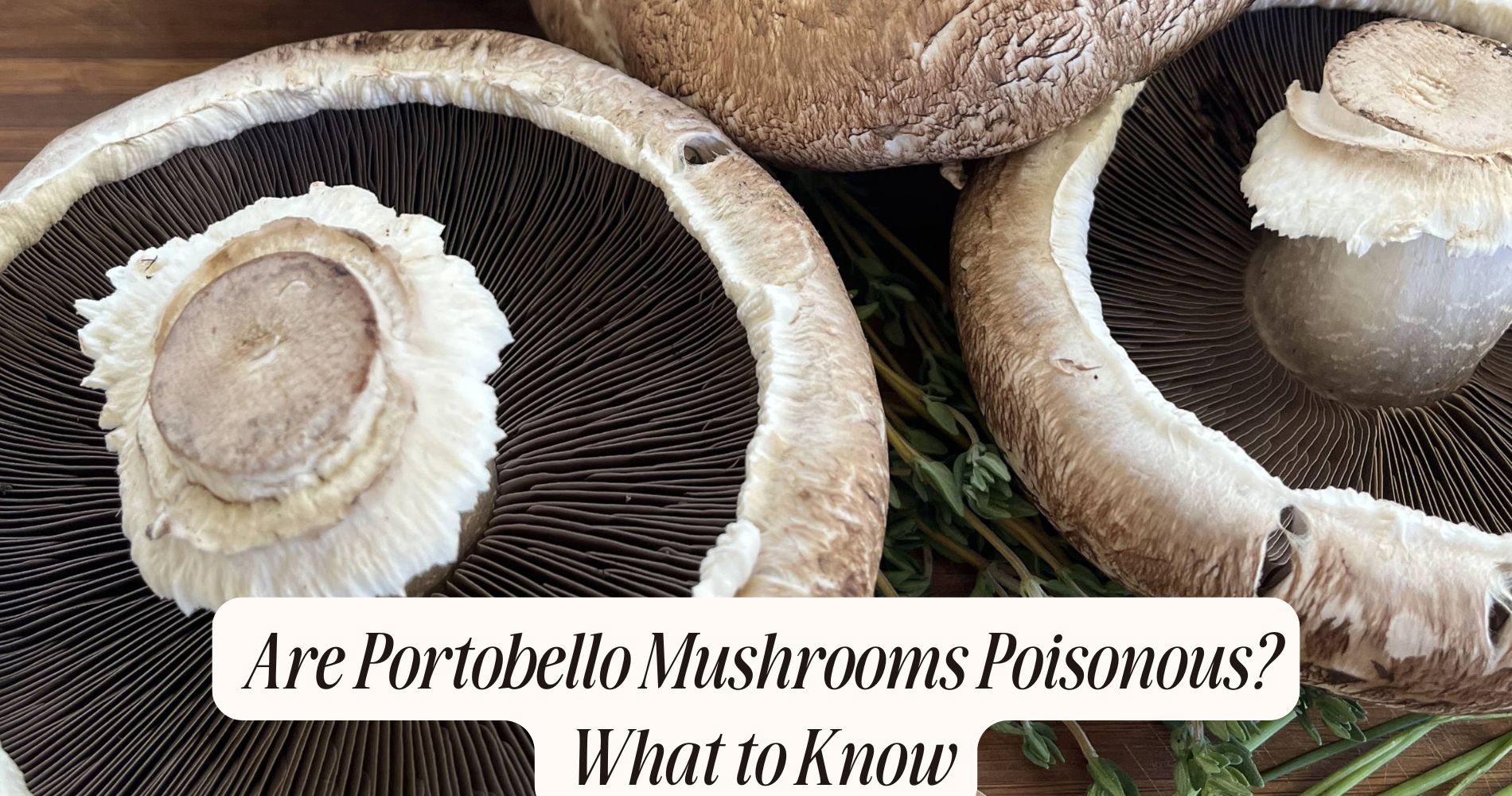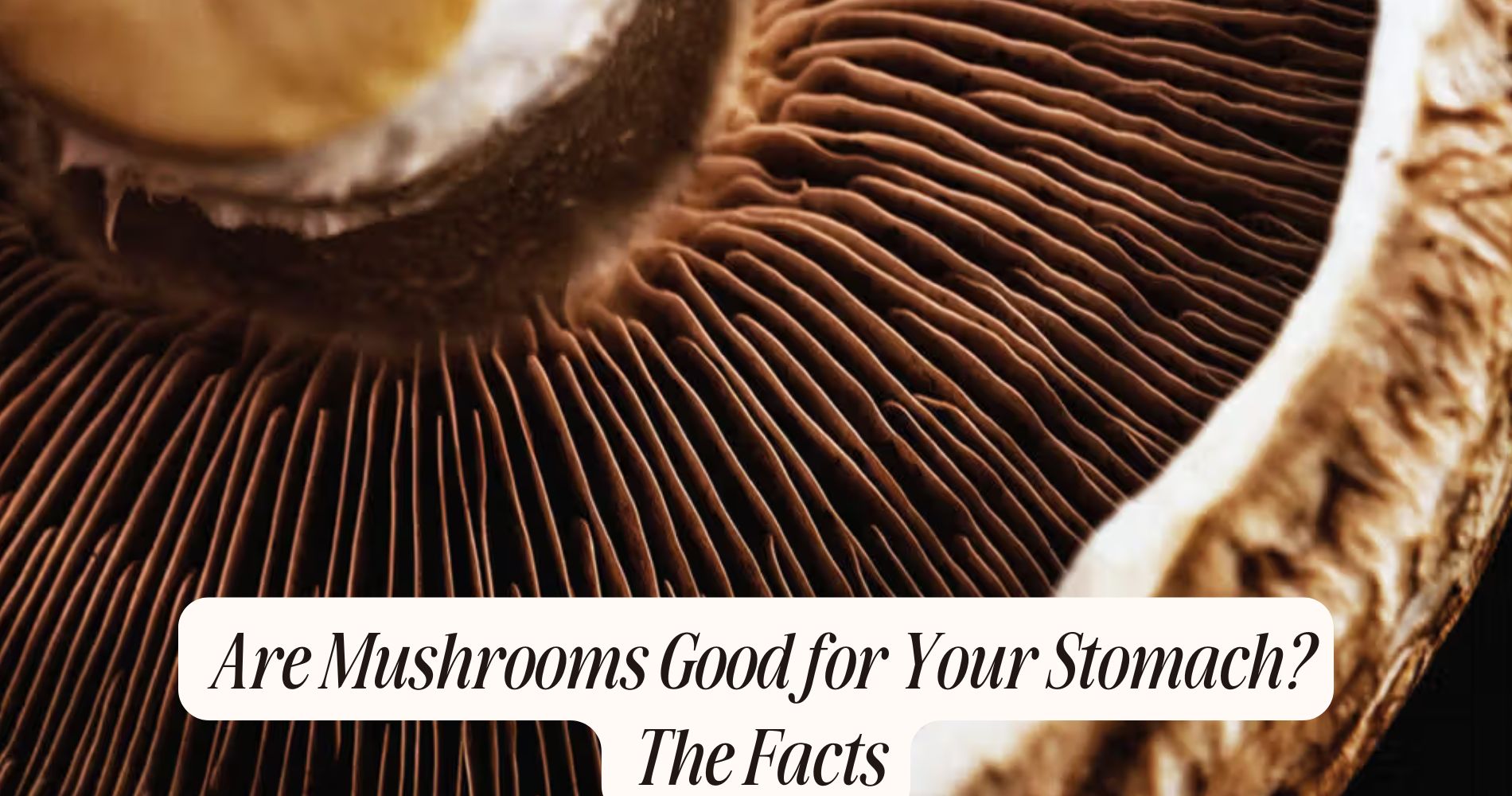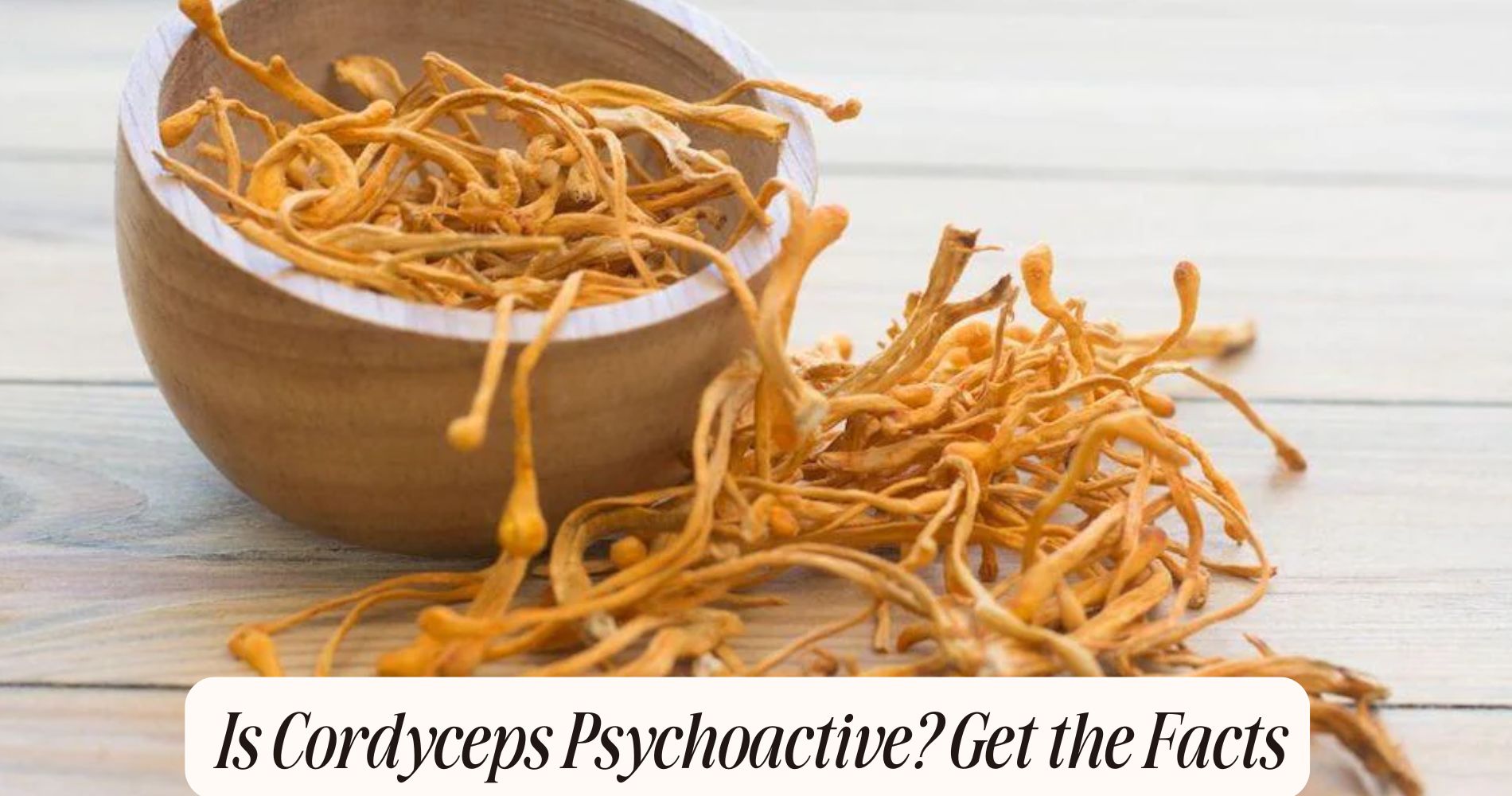
Are Portobello Mushrooms Poisonous? What to Know
Are portobello mushrooms poisonous? Portobello mushrooms aren't poisonous and are actually nutritious, offering low calories, high fiber, and essential vitamins. They provide a good source of B vitamins and minerals like selenium and copper, supporting your overall health. When selecting them, look for firm, unblemished caps and avoid slimy or dark-spotted ones. Proper cleaning and cooking to an internal temperature of at least 165°F (74°C) guarantee safety. While most people can enjoy them, some may have allergies or sensitivities to mushrooms. Awareness of these factors will enhance your culinary experience while keeping you informed about potential concerns.
Overview of Portobello Mushrooms
Portobello mushrooms, known for their large caps and meaty texture, are a popular choice in culinary applications. You'll find various Portobello varieties, including the classic dark brown and lighter tan options, each offering unique flavor profiles and textures. These mushrooms serve as versatile ingredients in a range of dishes, from grilled burgers to stir-fries.
When selecting Portobello mushrooms, it's essential to evaluate their freshness and firmness. You'll want to avoid any that appear slimy or have dark spots. Their culinary uses extend beyond simple grilling; they can be marinated, stuffed, or sautéed, making them suitable for vegetarian and vegan dishes.

Moreover, their ability to absorb flavors makes them an excellent base for sauces, cheeses, and spices. Chefs frequently utilize Portobello mushrooms in gourmet cuisine, showcasing their adaptability in various cooking methods, including roasting and braising.
Incorporating these mushrooms into your meals not only adds depth of flavor but also enhances the overall presentation. Understanding the different Portobello varieties and their culinary uses can elevate your cooking experience and allow you to create innovative dishes that cater to diverse palates.
Nutritional Benefits
Mushrooms, particularly Portobello varieties, offer a wealth of nutritional benefits that make them a valuable addition to your diet. These mushrooms are low in calories yet rich in essential nutrients, providing a considerable source of dietary fiber, which aids in digestion and promotes satiety.
You'll find that Portobello mushrooms are also a good source of B vitamins, including riboflavin, niacin, and pantothenic acid, which play vital roles in energy metabolism and the maintenance of healthy skin.
Additionally, Portobello mushrooms contain important minerals such as selenium, copper, and potassium. Selenium acts as an antioxidant, helping to protect your cells from oxidative stress, while copper supports iron metabolism and immune function. The potassium content can assist in regulating blood pressure levels.
From a culinary perspective, Portobello mushrooms are incredibly versatile. You can grill, roast, or stuff them, making them a popular meat substitute in vegetarian dishes, which enhances their appeal for those seeking plant-based options.
Common Myths Debunked
Many misconceptions surround portobello mushrooms, particularly regarding their nutritional benefits and cooking safety.
You're likely to encounter claims that these mushrooms are unhealthy or unsafe when prepared incorrectly.
Nutritional Benefits Explained
Some people may mistakenly believe that all mushrooms lack significant nutritional value, but this couldn't be further from the truth.
Portobello varieties, in particular, are nutrient-dense and offer several health benefits. These mushrooms are low in calories, making them an excellent option for those managing their weight.
Rich in dietary fiber, portobellos promote digestive health and can aid in maintaining steady blood sugar levels. They also contain essential vitamins and minerals such as B vitamins, potassium, and selenium, which contribute to overall well-being.
B vitamins play vital roles in energy metabolism and brain function, while potassium helps regulate blood pressure.
Additionally, portobellos are a source of antioxidants, which combat oxidative stress and inflammation in the body.
Their culinary uses are diverse; you can grill, sauté, or stuff them, enhancing your meals while reaping their nutritional benefits.
Cooking Safety Tips
Cooking safety should always be a priority, especially when handling ingredients like portobello mushrooms. While these mushrooms are generally safe, some common myths can lead to unsafe practices in the kitchen.
First, it's vital to know that portobello mushrooms must be cleaned properly. Rinse them under cold water and avoid soaking, as they can absorb excess moisture, compromising texture and flavor.
When it comes to cooking methods, grilling, roasting, or sautéing are ideal for enhancing their rich, earthy flavor. Each method requires careful temperature control to guarantee even cooking and food safety. Make sure to cook them to an internal temperature of at least 165°F (74°C) to eliminate any bacteria.

Another myth is that portobello mushrooms can pair with any ingredient without consideration. However, understanding flavor pairings is essential. They pair well with garlic, balsamic vinegar, and herbs like thyme or rosemary.
Avoid overly strong flavors like fish sauce, which can overshadow their natural taste.
Potential Allergies and Sensitivities
A variety of individuals may experience allergies or sensitivities to portobello mushrooms, which can lead to adverse reactions. These reactions may manifest as allergy symptoms, including hives, itching, gastrointestinal distress, or respiratory issues. If you have a history of food allergies, it's important to approach portobello mushrooms with caution.
The proteins within these mushrooms can trigger immune responses in sensitive individuals, resulting in varying degrees of discomfort.
Mushroom sensitivities often arise from individual differences in immune system function. Some people may not tolerate the compounds found in portobello mushrooms, such as chitin, which is difficult for some to digest. If you suspect you have a sensitivity, monitor your body's response after consumption.
Consulting with an allergist or healthcare provider can help determine whether you have an allergy or sensitivity. They may recommend tests to evaluate your reaction to portobello mushrooms specifically.
Avoiding these mushrooms and related products is advisable if you exhibit allergy symptoms after consumption. Staying informed about your body's reactions can aid you in making safe dietary choices and minimizing potential health risks associated with portobello mushrooms.
Safe Cooking Practices
To guarantee the safety of portobello mushrooms, you must employ proper cleaning techniques before cooking.
It's vital to clean them thoroughly to remove any contaminants, and you should also adhere to specific cooking temperature guidelines to eliminate potential toxins.
Proper Cleaning Techniques
When it comes to handling portobello mushrooms, proper cleaning techniques are vital to guarantee safety and enhance flavor. Start by selecting fresh mushrooms; check for firmness and avoid any with dark spots or slimy surfaces. Before cleaning, make certain your hands and work surfaces are sanitized to minimize contamination.
Use a damp cloth or soft brush as your primary cleaning method. This technique effectively removes dirt without soaking the mushrooms, which can cause them to become soggy. Avoid submerging them in water, as excess moisture can dilute their flavor and texture. If necessary, you can gently rinse them under cold running water, but be sure to dry them immediately with a paper towel.
Handling precautions are essential. Always clean mushrooms right before use to prevent spoilage, and store any unused mushrooms in a paper bag in the refrigerator to maintain freshness.
Cooking Temperature Guidelines
Making certain portobello mushrooms are cooked to the right temperature is essential for both safety and flavor enhancement. When you cook these mushrooms, you should aim for an internal temperature of at least 165°F (74°C). This temperature guarantees that any potential bacteria are effectively eliminated, making your meal safe to consume.
Utilizing various cooking methods, such as grilling, sautéing, or roasting, requires precise temperature control. For best results, preheat your cooking surface to the appropriate temperature before adding the mushrooms. When grilling or roasting, consider using a food thermometer to monitor the internal temperature accurately. This practice not only guarantees food safety but also helps you achieve the desired texture and flavor.
If you're sautéing, cook the mushrooms for about 5-7 minutes over medium-high heat, stirring frequently. For grilling, aim for a cooking time of approximately 6-10 minutes per side, depending on the thickness of the mushroom caps.
How to Select Fresh Portobellos
Selecting fresh portobello mushrooms requires attention to several key characteristics. Start by examining the cap; it should be firm and unblemished, with a rich, dark brown color. Avoid any mushrooms with signs of sliminess or discoloration.
The gills, located underneath the cap, should be a deep brown and free from any moisture. A fresh portobello will also emit a pleasant, earthy aroma, indicating prime freshness.
Consider the harvest season when selecting your mushrooms. Portobellos are typically harvested in late summer to early fall, so purchasing them during this time increases your chances of finding the freshest specimens.

When it comes to storage, keep these mushrooms in a paper bag in the refrigerator, as this allows for proper airflow while minimizing moisture buildup. Avoid plastic bags, which can trap moisture and lead to spoilage.
It's best to consume them within a week of purchase for peak flavor and texture. If you notice any signs of spoilage, such as a foul odor or excessive moisture, discard them immediately.
Alternative Mushroom Options
If fresh portobello mushrooms aren't available or you're looking to diversify your culinary options, several alternative mushrooms can enhance your dishes. Shiitake mushrooms, for instance, provide a rich umami flavor and a meaty texture that can often substitute effectively for portobellos. Their distinct taste complements a range of cuisines, from Asian to Italian, making them versatile in various recipes.
Cremini alternatives are another excellent choice. These mushrooms are fundamentally immature portobellos and carry a similar flavor profile but are smaller and firmer. They can be used in stir-fries, soups, or salads, offering a subtle earthiness without overpowering other ingredients.
When selecting alternative mushrooms, consider their moisture content and cooking time. Shiitake mushrooms typically require rehydration if dried, while fresh cremini can be sautéed directly.
Enjoy the Benefits of Mushrooms Safely with SUPER MUSHROOM GUMMIES
If you're curious about mushroom safety and want a convenient way to enjoy their benefits, try SUPER MUSHROOM GUMMIES by Well Gummies! These easy-to-use gum chews feature 10 functional mushrooms, providing immune support, enhanced focus, and natural energy without the hassle of cooking. Perfect for busy lifestyles, these vegan gummies help you stay balanced and energized without jitters or crashes.
With a delicious wild berry flavor, they taste just like candy, making it enjoyable to nourish your body and mind every day. Experience the safe, powerful benefits of mushrooms with SUPER MUSHROOM GUMMIES!
Frequently Asked Questions
Can Portobello Mushrooms Cause Food Poisoning?
Portobello mushrooms can cause food poisoning if they're not properly prepared. Make certain you're following safe mushroom preparation techniques, like thorough cleaning and cooking, to minimize risks and make certain Portobello safety in your meals.
Are There Any Toxic Look-Alikes for Portobello Mushrooms?
When foraging, you must practice careful mushroom identification. Some look-alikes, like the poisonous Agaricus bisporus, can confuse you. To guarantee safety, always verify your finds with reliable resources before consuming any wild mushrooms.
How Should Portobello Mushrooms Be Stored?
To store Portobello mushrooms, keep them in a paper bag in the refrigerator. Guarantee proper cleaning before storage, and maintain ideal conditions by avoiding plastic, which traps moisture and accelerates spoilage.
Can You Eat Raw Portobello Mushrooms?
You can eat raw portobello mushrooms, as they offer nutritional benefits and unique flavors for salads and other dishes. However, cooking enhances their culinary uses and makes them easier to digest. Enjoy them prepared or raw!
What Is the Shelf Life of Fresh Portobello Mushrooms?
Fresh portobello mushrooms typically last about one week when stored properly. Freshness factors include temperature and humidity, while spoilage signs involve discoloration, sliminess, or an off odor. Always check before using to guarantee safety.
Conclusion
To summarize, portobello mushrooms aren't poisonous and offer numerous nutritional benefits. While some myths persist about their safety, it's important to be aware of potential allergies and practice safe cooking methods. Selecting fresh portobellos enhances your culinary experience, and if you seek alternatives, various mushrooms can provide similar flavors and textures. By understanding these aspects, you can confidently incorporate portobellos into your diet and enjoy their unique qualities without concern.




